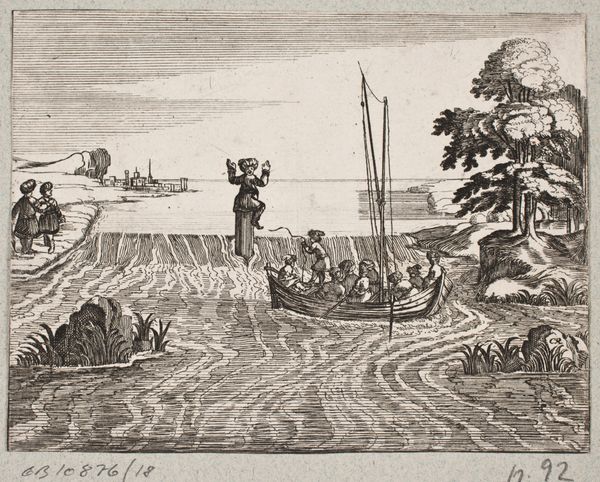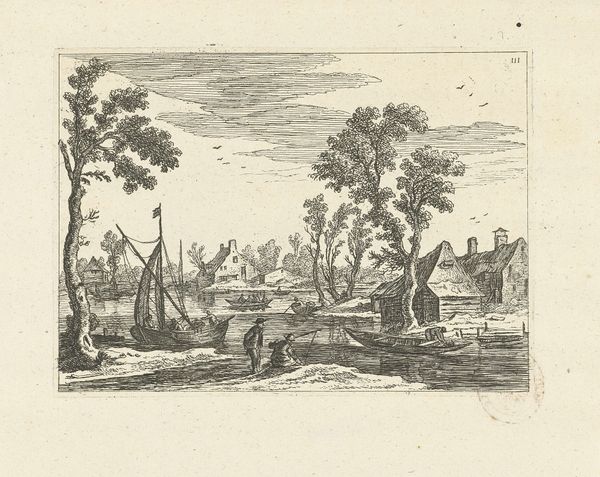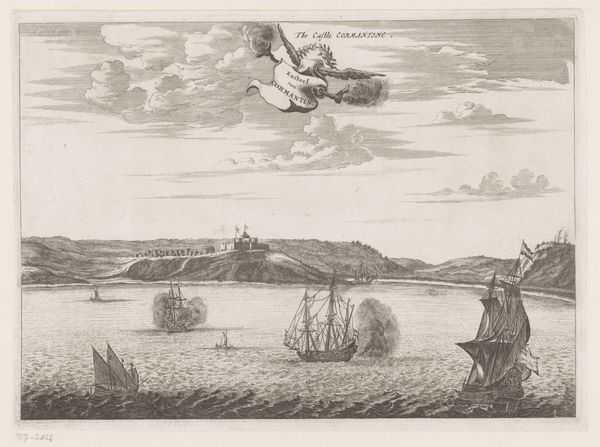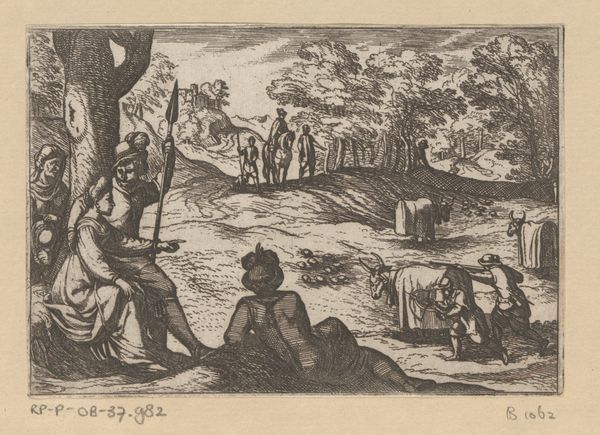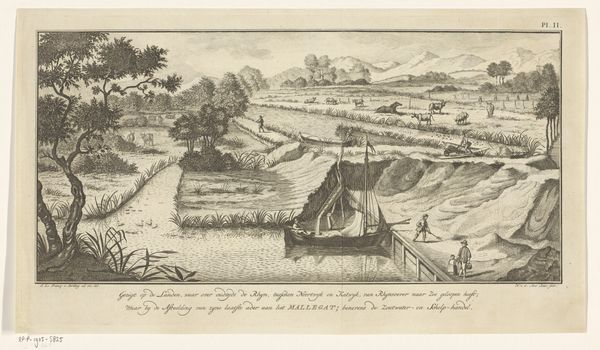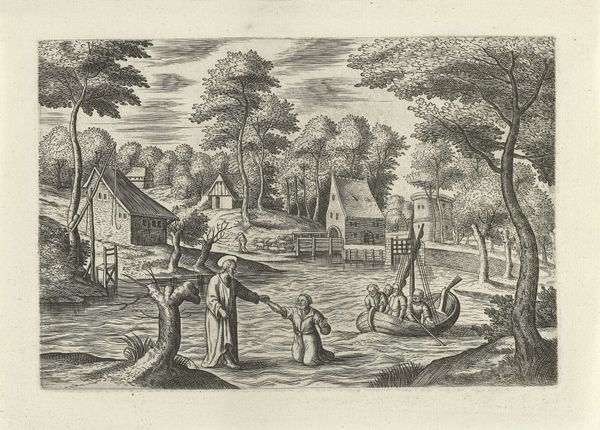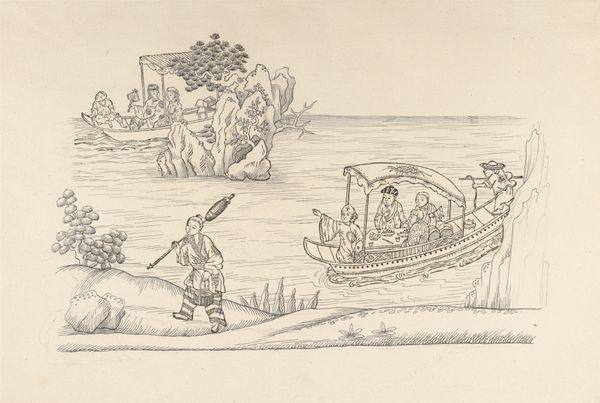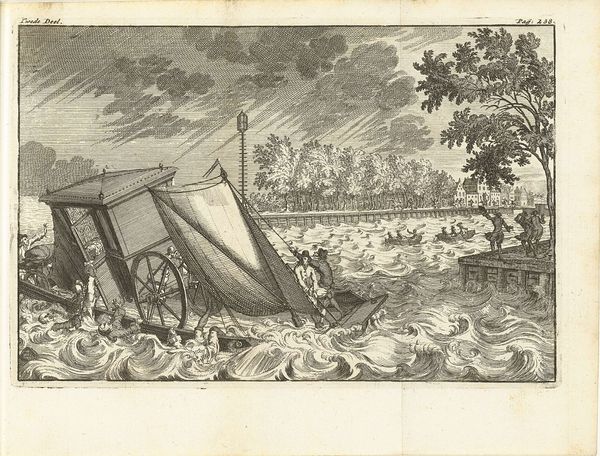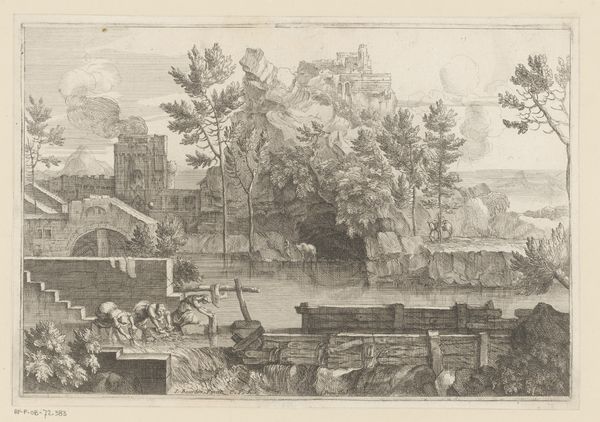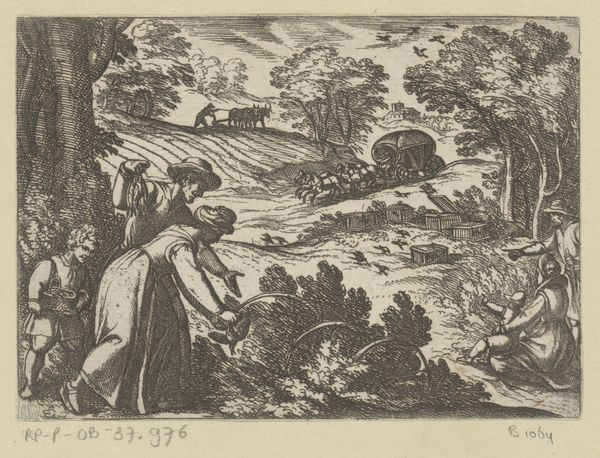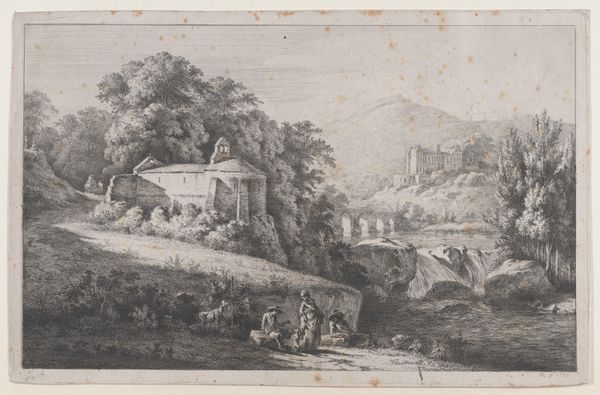
silver, print, etching
silver
narrative-art
baroque
etching
landscape
figuration
line
genre-painting
history-painting
realism
Dimensions: height 101 mm, width 140 mm
Copyright: Rijks Museum: Open Domain
Curator: Look closely at "Hunters Driving Wild Geese into a Large Net," an etching by Antonio Tempesta created in 1598, rendered in silver. It’s currently housed here at the Rijksmuseum. Editor: Right away, there's this peculiar sense of ordered chaos. The detailed lines, the almost comical frenzy of the hunt… It's teeming with a busy sort of energy, isn't it? Curator: Indeed. The net, dominating the left side, acts as both a focal point and a symbolic enclosure. Think of the net as a form of predetermined destiny or the confines of social structure during that era. What do you make of that contrast with freedom in the wide open landscape around the event? Editor: The contrast almost creates a feeling of being trapped, for the geese certainly, but also maybe reflecting something about us, the viewer, about humans in general. I'm also really drawn to the depiction of these hunters; some in boats, one looks like they are on top of a barrel and others on the ground – a theatrical performance unfolding in silver lines. Curator: You touch on a critical element. The hunters represent the human desire to control nature. Look at the array of figures and their weaponry, all meticulously rendered. Tempesta conveys not just a literal hunt, but a statement on power dynamics and the taming of the wild. The variety of hunters also show a distinct separation of social classes that have different roles to play. Editor: And the dog, lunging forward—that instinctual drive amplified and directed. What a vivid symbol of both natural instinct and human influence over nature! But those poor geese though! They look like a fluffy white tsunami about to crash on the shore! I'm surprised such a scene of slaughter looks kind of cheerful too. Curator: It’s the Baroque aesthetic. Even amidst potential brutality, beauty is extracted. But this image also speaks to cycles – the endless pursuit, the inevitable capture, and the consequences for those caught in the snare. Editor: A pretty morbid thought when it comes to cycles – makes one ponder the human condition a little bit, doesn’t it? Thank you for clarifying and unpacking all of that symbolism and its art historical context. I certainly look at that print in a very different way now! Curator: My pleasure! This work really allows for deep contemplation about not just the relationship with the environment but of our history itself, even four centuries later.
Comments
No comments
Be the first to comment and join the conversation on the ultimate creative platform.
